#nature marshtit coaltit
Explore tagged Tumblr posts
Text
Monday 22nd March 2021
The Little Brown Birds
I had to put in an emergency online order for more bird seed yesterday and we’re still waiting for the half coconuts and Niger feeders to arrive. Honestly, the cast of thousands is eating us out of house and home. We had 25kg of seed delivered on the 18th February when we already had half a bin in stock, now we’re down to the very dregs and that’s without counting all the suet fatballs, fruit and other scraps we put out.
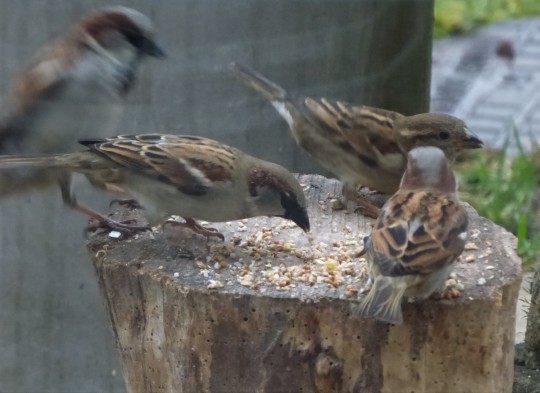
UK households did you remember to fill in your Census form? Residents and visitors included
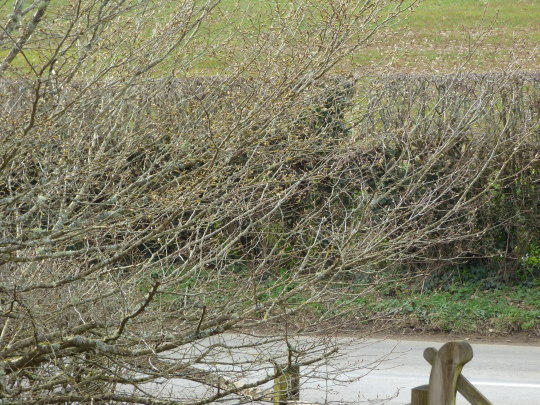
The Beech tree by the front gate, it’ll soon be in leaf again, hopefully
There’s still quite a chill in the breeze and I’ve had to order some repair glue for my walking boots because reading back my nature journal from a few years ago, we were out earlier in the year, well wrapped up and intrepid. Crow has been saying get new boots, but I like the ones I have, they’re comfortable too, all I need to do is make sure the sole doesn’t fall off.
To those promised little birds and I have two visitors who are hard to photograph as their visits are swift and they don’t stay still for long.
MARSH TIT: Status Red listed
Scientific Name: Poecile palustris Length: 12 cm (4½") Wing Span: 18-19 cm (7-8") Weight: 10-12 g (¼-½ oz) Breeding Pairs: 29,000 (BTO)
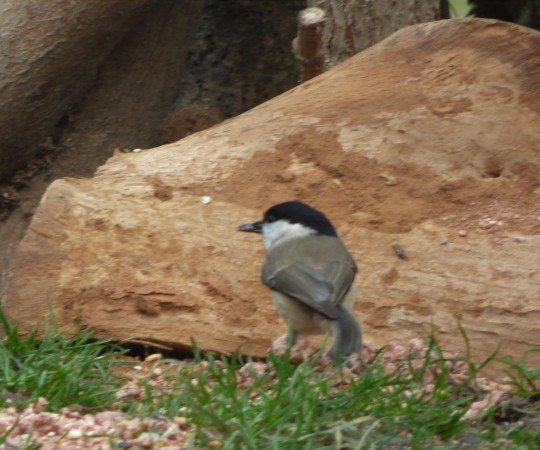
Marsh Tit with the plain black head
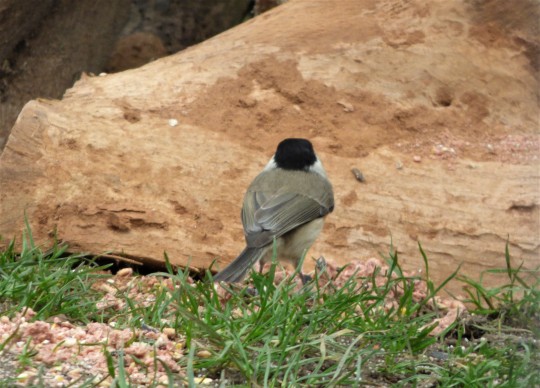
The Marsh Tit is incredibly difficult to distinguish from the even more scarce Willow Tit. There may not be too many Marsh Tits around but the Willow Tit is said to be the fastest declining native bird LINK (along with Turtle Dove) Both of them have black caps, sandy-brown upper parts and buff underparts.
It’s only at the turn of the last century that they were recognised as separate species and I’ve read that 2,750 pairs existed in 2016. The RSPB currently displays 3,400. I really hope it’s on the up.
We’re told
The Marsh Tit is less scruffy looking than the Willow Tit and has a neater, smaller bib and glossier black cap. Also, the Marsh Tit lacks the pale wing panel, does not look "bull-necked" and usually has a square-ended tail but is sometimes slightly forked.
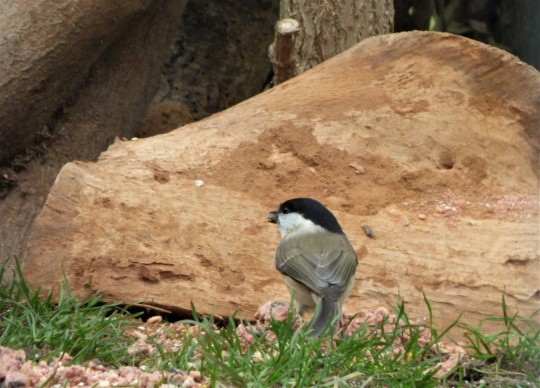
Marsh Tit
Females build a cup shaped nest of moss, which they line with feathers and hair. They might use a nest box but like holes in deciduous trees.
Eggs are white with brown markings and are smooth and glossy. The female incubates the eggs by herself, but young nestlings are fed by both parents.

As if identification wasn’t confusing enough, juveniles have a dull cap and look very much like a Willow Tit.

We see the Blue, Great and Long Tailed Tits at the hanging feeders much more so than Marsh Tits who like to feed on the ground more than the others. They’ll feed on insects and seeds and will go for Beech mast.
My guide says that peanuts, seeds and fat may attract them to gardens, but usually only if there are ancient woodlands nearby (contrary to their name, they do not live in marsh land). They are particularly fond of black sunflower seeds, but they’re in competition there with the Nuthatch.
Much more common place is the similar, but different,
COAL TIT: status Green listed
Scientific Name: Periparus ater Length: 11.5 cm (4½") Wing Span: 17-21 cm (7-8") Weight: 8-10 g (¼-½ oz) Breeding Pairs: 610,000 - 660,000 (BTO figure)
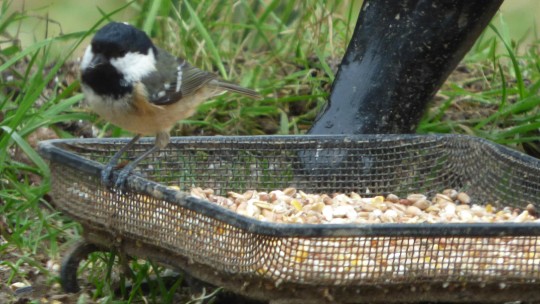
Coal Tit, you can just about make out the white patch on the head in the picture above, below show it more clearly
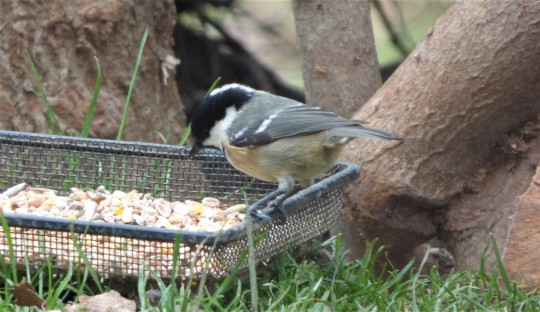
The Coal Tit is a small tit, in fact the smallest European tit, and could be confused with the almost indistinguishable Marsh Tit and Willow Tit if it was not for the white patch on the nape. While it behaves like a Blue Tit, there is no blue in its plumage. I do see them on the hanging feeders but more often on the ground
The upperparts are a olive-grey, the underparts buff coloured. The crown and large bib are black, while the cheeks and nape are white. There are also two white wing bars on each wing - this feature separates it from the Marsh and Willow Tits if the nape is not visible. The legs are blue-grey.
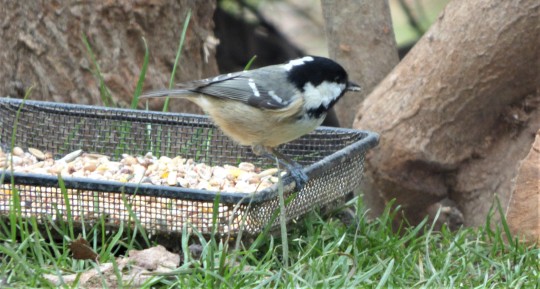
Coal Tit
Coal Tits will nest in hollows in trees or in mouse holes. Like a Blue Tit’s the nest can be made from moss, wool, dead leaves and spider web, except that it is moss-lined. They’ll be well suited here then both types.
The Coal Tit's small (15 mm by 12 mm) eggs are smooth and glossy, they’re white with reddish-brown speckles. Again the female incubates the eggs by herself and nestlings are fed by both parents.

Juveniles are browner above, and the underparts, cheeks, nape and wing bars are more yellow.
Again like the Marsh Tit, Coal Tit eat insects, beech mast and conifer seeds and in the garden they prefer black sunflower seeds, sunflower hearts and occasionally suet.
I’ve read that when food is plentiful they hoard it by hiding it so that they think they have food for later when times are harder, but like Squirrels the Coal Tit's memory is not as great as its ingenuity in hiding places and you will often find forgotten sunflower seeds germinating in the most unlikely places - well, we were there last year weren’t we, so perhaps it wasn’t Squirrels at work after all.
Great Tits can sometimes be seen watching a Coal Tit stashing away its seed and then go and raid it. Opportunists.
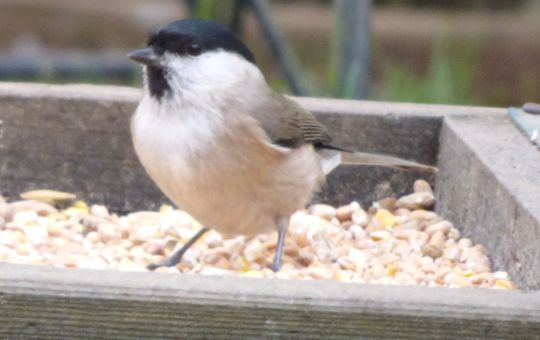
Marsh or Willow Tit? watch via You Tube.
youtube
Willow Tit news here.
WHAT DID I LEARN TODAY?
that I definitely need more sleep!
2 notes
·
View notes